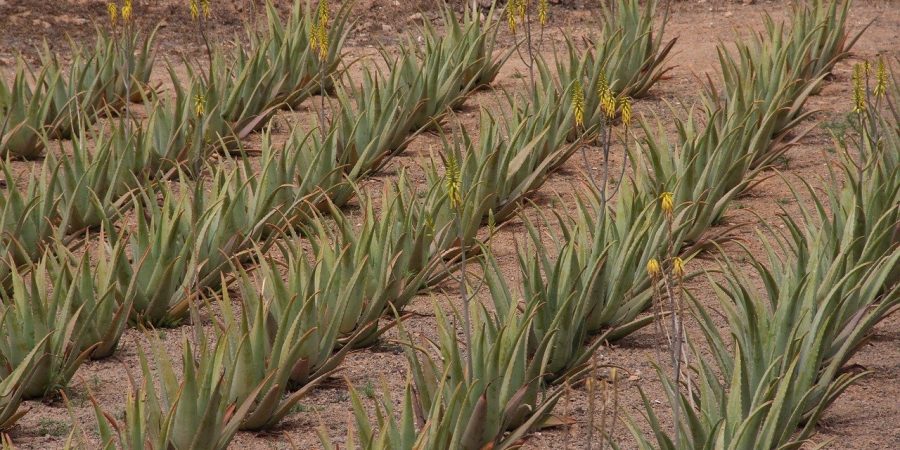With all the incredible health and healing properties found in Aloe Vera, it’s no wonder that is found growing numerous homes around the globe. You can also find this plant growing wild in most tropical regions. This because Aloe Vera thrives in hot conditions. The best feature of this plant is its ability to adapt.
Aloe Vera plant leaves and sap have various uses. They can be found in food supplements as well as in products such as beverages, creams, ointments, makeup, sunscreen and lotions. The plants’ interesting features make it a good ornamental plant.
Aloe Vera varieties
Not all plants pack the medicinal punch that the most common Aloe Vera called ‘Aloe barbadensis Miller’ does. This variety grows easily indoors or outdoors in pots or in the ground. Another variety Aloe reitzii, is tall and produces spike-shaped red flowers in the hot season. The Aloe cameronii variety has red leaves when grown in full sun and high heat. The leaves alone made it stand out. These varieties are both good choices for outdoor décor. For a small container plant that you can plant by your window, try the dwarf variety Aloe humili’.
Soil Preparations
Whether planting in the ground or in a pot, Aloe can grow anywhere. However, Aloe Vera does best in well-draining soil. It will grow in just about any type of conditions, but your plant will be happiest when its soil is extremely well draining. Aloe Vera plants are adapted to survive in very dry conditions and may rot if planted in soil that collects standing water. The soil composition should be loamy or sandy. Soil should have proportionate levels of phosphorus, potassium and sodium.
Preparing for planting
Aloe Vera is usually not propagated through seeds but through vegetative propagation which is easy to do. An aloe plant produces offsets that you can pull away from the main plant and transplanted. Gently separate the roots of the baby plant away from the mother plant until they are completely separated. You might have to slice the root with a knife if it doesn’t easily separate. This is the most common way to propagate your own aloe plant. You can also buy an Aloe Vera plant at most nurseries. Some farmers prefer digging out the Aloe rhizome and cut it. The stem should have at least two nodes which you can plant in a pot. Once the plant sprouts, you can then replant it in the field. Other farmers could use the root sucker method.
Planting
You can cultivate 22,500 Aloe Vera plants per acre which is approximately 56,000 plants per hectare. Aloe Vera suckers should be planted 40 x 45 cm apart. An aloe vera plant has a shallow but wide root system. Therefore, place the Aloe Vera root ball just below the surface of the soil. If you partially bury any of the leaves or if they touch the soil, they may rot. Before you start watering, give the aloe plant a few days to repair any roots that may have been damaged during planting. Watering damaged roots increase the chance of root rot.
Caring for your plants
Although the plant is pest resistant there are many insects that attack the plant. Common pests include scale insects, aphids, spider mites, mealy bugs.
Aloe is a drought-resistant plant. It doesn’t require much water. However, you have to provide drip irrigation to it during periods of little to no rainfall. Bear in mind that an Aloe plant is in greater danger of drowning than of drying out too much. Its succulent leaves and roots serve as reservoirs of water that help it survive in the driest of conditions. A newly transplanted plant should be watered once very well. After that, water your young Aloe once every two to three weeks. Wait until the soil is dry to the touch before you water it again. During the cold season, your plant may not require much water. Remember to stop watering if the leaves turn yellow or fall apart and increase water if leaves look thin or curled.
Aloe plants do not require fertilizer, and overuse can harm the plant or cause it to grow in an unhealthy manner. If you wish to encourage growth, use low nitrogen, high phosphorous, low potassium fertilizers such as a 10:40:10 or 15:30:15. Apply once a year.
The soil around the aloe plant should be free of grass and weeds. Remove these regularly but do it carefully. This is because aloe soil is loose and sandy and vigorous weed-pulling can easily damage the roots.
Harvesting the Plant
You can harvest 25 tons of leaves from 2 acres of land ie. about 40 tons of aloe leaves from one-hectare land. It takes almost10 months for thick flesh leaves to populate the land. Harvesting is labour intensive because you remove only 3 to 4 leaves from each plant at a time. This way, you can harvest at least 3 times a year. Replant broken rhizomes and maintain the ridges.
References:

Hi, I am very interested and would appreciate any help regarding growing Aloe Vera in Zambia, please could you let me know how and where I can find out more information.
I too am interested in aloe vera farming.. Any help is highly appreciated. [email protected]
I too am interested.
how do we get in touch. [email protected]
Hi,
I am very interested to set up a plantation for aloe vera here in zambia luasaka west to be particlar.
kindly advise on how i can go about it and if there is a specific aloe vera which i have to plan.
also advise the market for this product?
Thank you,
can share my knowledge on aloe vera at a fee watsup me on 0964286440
i need Aloe vera for my experiment, where can i get it